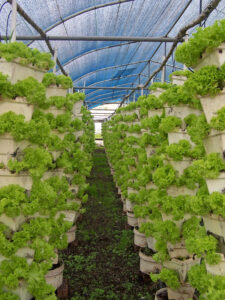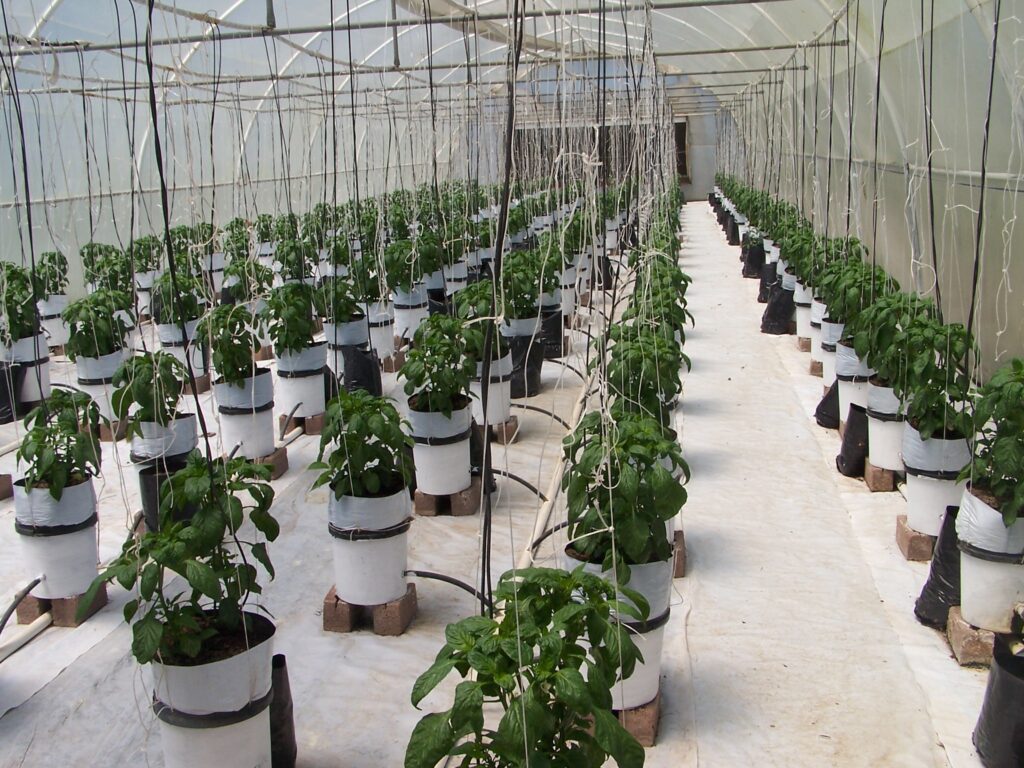The Predictions of Robert Malthus

In 1798, Robert Malthus an English economist, predicted that population growth would be curtailed by the inability of agriculture to keep pace with food demands. This controversial assumption has so far proved to be false, simply because up until now agricultural development has outpaced the demand for food. In some cases the technological advances in agriculture were so great that some countries such as the United States and Rhodesia in the last century were able to export huge quantities of surplus food to those countries in dire need of it.
The Role of Advanced Food Technology
Advanced food technology has ensured, in the main, that the world’s populations are fed. Those countries we hear and read about that maintain starving populations usually do so through corruption or a desire for control.
Hydroponics: A Technological Advance in Agriculture
Hydroponics is another technological advance that will ensure that enough food is produced to feed the countries’ populations, and ensure that food is available at an accessible price.
Challenges of Traditional Agriculture
A return to the practices of the 19th century using compost and manure might be very laudable from an ecological point of view but it is not cost-effective and cannot be implemented on a scale of sufficient size to feed large populations. If organically grown foodstuffs could be grown cheaply and on a large scale it would be a different matter.
What is Hydroponics?
Hydroponics is a method of growing food using water soluble fertilisers and an inert growing medium such as composted pine bark or perlite. There is no soil involved in hydroponics and the plants derive their nutrition solely from the nutrient feed. A constant pH of 5.5 to 6.0 must be maintained at all times to ensure maximum nutrient uptake by the plants.

Nutrient fertilisers are supplied by the fertiliser companies in the form of Calcium Nitrate on the one hand and a balanced cocktail of 11 other macro and micro nutrients, so calculated to supply the plants with perfect nutrition. This is something that traditional soil based agriculture seldom can achieve, as the distribution in the soil of the 13 minerals required for a plant’s nutrition is completely random.
It is also dependent upon rainfall or irrigation to ensure the plant’s appropriate development. In hydroponics, water is part of the food distribution system so this problem never arises, and incidentally, hydroponics uses approximately one third of the water consumed by agriculture because with the latter there is much water wastage past the root zone back into the water table.
Water Scarcity and Hydroponics
Unlike Australia for example, South Africa is a water-stressed country (Increasing population outstrips the natural geographical rainfall) and agriculture is one of the biggest users of water so the worrying prediction is that in the-not-too-far-distant-future we will run short of water unless stringent water-saving measures are taken. Future food security can be achieved by concentrating on developing hydroponic farmers into large scale suppliers.
Meeting Nutritional Needs
We are consistently reminded by our health experts to eat salad greens, cruciferous vegetables, carotenoids, fruit, nuts, etc. Yet a simple check of black South Africans’ daily diet will reveal that very few avail themselves of this advice, either because of economic reasons or because of a lifetime of habits eating carbohydrate based foods. Either way, retailers, who make their profits from high volumes and low mark-ups, would be do well to enlist hydroponic farmers among their suppliers for these are precisely the people that will be able to fulfil the food tastes and needs of the black market in the future.
Advances in Pest and Disease Control
Chemical sprays against pests and diseases in hydroponics is now also largely a thing of the past as biological remedies are fast taking over from previously chemical based substances. This means that the danger to humans from consuming chemical laden fruits or vegetables in hydroponics is no longer a threat. This could also now be the case in traditional agriculture but some farmers are slow to recognise the advantages of using biologicals and a lifetime of habit sticks them to tried and trusted methods, albeit old fashioned ones.
Nutritional Quality of Hydroponic Produce
Another myth that needs dispelling is that Hydroponic fruits and vegetables do not have as many vitamins in them as their soil-grown equivalents. If the nutrition in hydroponics is perfect, then the equivalent soil based nutrition could never match it, due to the reason mentioned earlier and the levels of vitamins found in Hydroponic grown vegetables are as high and in some instances higher than their agricultural equivalents.
The Benefits of Hydroponic Suppliers
Hydroponic suppliers fulfil the retailers’ most stringent requirements for quality, quantity, reliability and price.

*John Sandison of DaisyFresh Hydroponics holds certificates in advanced hydroponics and is a hydroponic consultant and educator. His company manages hydroponic projects to ensure profitability and he has written a book on the subject titled “A Guide to Profitable Hydroponics” (available on Amazon). Contact: www.daisyfreshhydroponics.co.za

